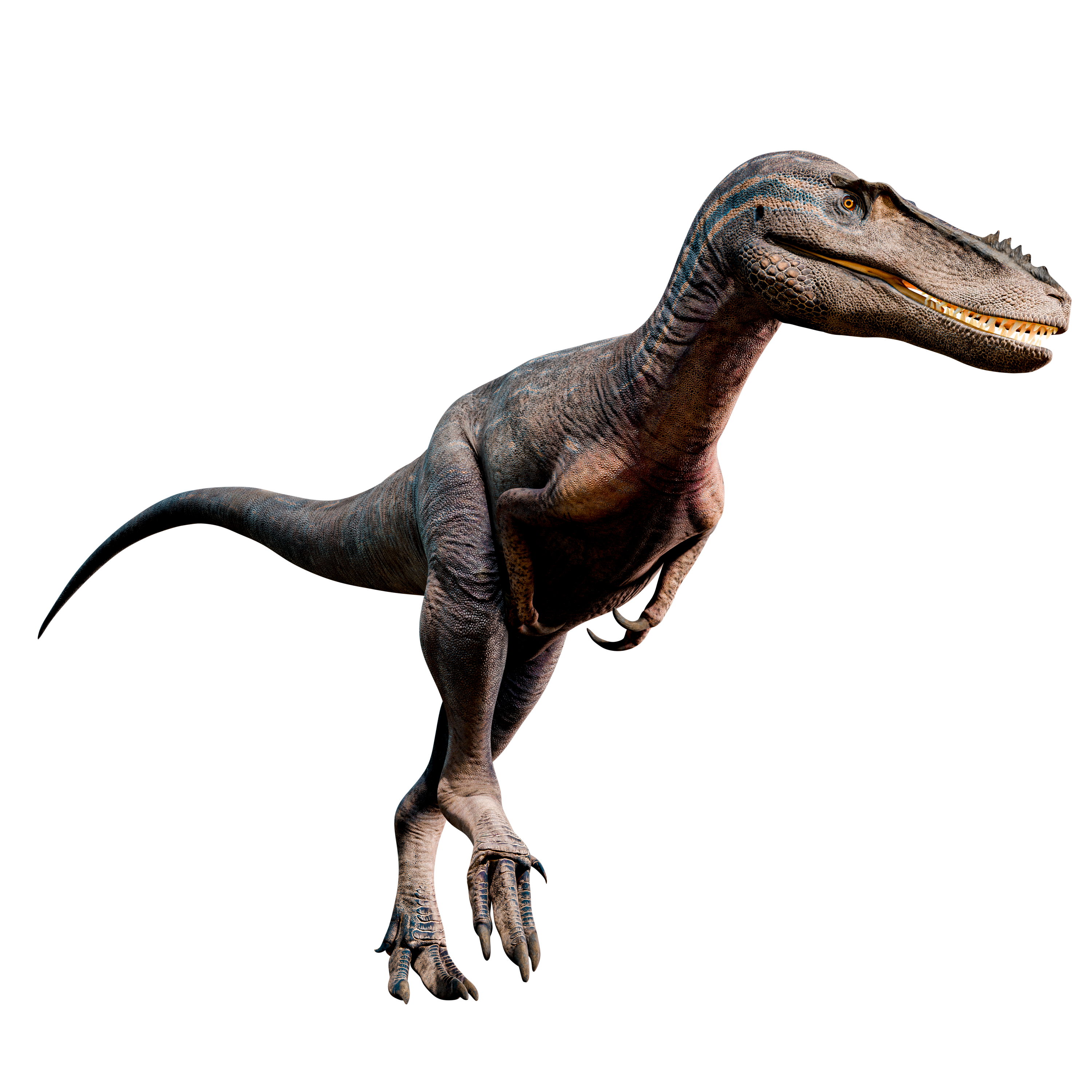The Long-Snouted Tyrant Who Wasn't King
Despite its gracile build and long, low snout, Alioramus was a tyrannosaur, and a close relative of T-rex and Tarbosaurus, the latter of which shared ancient Mongolia and in whose shadow Alioramus eked out a living.
Overview: While most tyrannosaurids were large bulky beasts and apex predators, at least one branch of the family took a different route. Alioramus, along with its close relative Quianzhousaurus, broke the tyrannosaurid mold by becoming smaller and more gracile, with long, low, ornamented skulls. Alioramus was the first of these to be discovered in the 1970s in the Late Cretaceous Nemegt Formation of Mongolia. While still fairly large in its own right, it would have occupied a role as a mesopredator in the shadow of its much larger relative Tarbosaurus.
Discovery: Alioramus remotus was discovered in the early 1970s by a joint Soviet-Mongolian expedition in the Gobi Desert of Mongolia. The holotype (original) specimen, which consisted of a partial skull and three metatarsals, was found in rocks of the Nemegt Formation. It was named and described in 1976 by Sergei Kurzanov. Alioramus is Latin, from alius ('other') and ramus ('branch'), and remotus is Latin for remote, making the full name meaning “remote other branch”, so named because Kurzanov believed that it represented a distant branch of the tyrannosaurid family. In 2009, a second species, Alioramus altai (holotype IGM 100/1844), was discovered at another locality from the Nemegt Formation which may have differed slightly in age from the Alioramus remotus site. It was named after the Altai Mountains and consists of a partial skeleton, including a mostly complete skull, partial vertebrae, pelvic girdle, and hindlimbs. The far more complete skeleton of A. altai has greatly improved our understanding of Alioramus as a whole. The holotypes of A. remotus and A. altai remain the only specimens known from the genus.
Evolution: Alioramus was a type of tyrannosauroid. Tyrannosauroids were a clade of coelurosaurian theropods (theropods closer related to birds than to other theropods like Allosaurus) which first appeared in the Middle Jurassic and came to prominence in the Cretaceous. Most analyses place Alioramus and its slightly later close relative Quianzhousaurus within the family Tyrannosauridae and within Tyrannosaurinae (closer to T-rex than to Albertosaurus). Tyrannosaurids evolved sometime between 90 and 81 million years ago in North America where they became apex predators. Eventually some tyrannosaurids migrated to Asia. Large Asian forms include Zuchengtyrannus (73.5 Ma) and Tarbosaurus (70 Ma). But Alioramus and Quianzhousaurus, together classified in the tribe Alioramini, represent a different branch of tyrannosaurs so far unique to Asia, possibly branching off early in the evolution of tyrannosaurines. However, another analysis suggests that the Alioramini may actually lie just outside of Tyrannosauridae, and thus while they are certainly tyrannosauroids, they may not be true tyrannnosauids. If not tyrannosaurids, then they likely evolved in Asia from Asian tyrannosauroid ancestors, which would explain why there are no known American representatives of Alioramini. However, while their phylogenetic position is somewhat uncertain, they are currently treated as a unique branch of tyrannosaurine tyrannosaurids, and thus would have been descended from North American tyrannosaurines at some point in their evolution. It is possible that Alioramus could be an ancestor of Quianzhousaurus which lived a couple million years later in China, and it has even been suggested in a 2017 study that Quianzhousaurus sinensis should actually be classified as a species of Alioramus, but a 2022 study provides evidence that the two are different enough to warrant separate genera.
Description: Alioramus was fairly small by tyrannosaur standards, being estimated at 5.5-6 m (18-20 ft) long and weighing 500–700 kg (1,100–1,500 lb). However, as the only known specimen was a juvenile or subadult, about nine years old when it died, and it is very likely that it would have had a longer adult length. In any case, it was also a more lightly built theropod than other tyrannosaurids, with a gracile build, long legs, and a relatively long snout with thin, blade-like teeth. These are all features associated with juvenile tyrannosaurids. In fact, it was once suggested that Alioramus might be a juvenile Tarbosaurus, but the discovery of a second species of Alioramus (Alioramus altai) and actual juvenile specimens of Tarbosaurus disproved this. The discovery of Quianzhousaurus further confirms that alioramins are a legitimate branch of tyrannosaurs, not just the juveniles of bigger tyrannosaurs. These unique animals appear to maintain juvenile characteristics throughout their life, setting them apart from their relatives. While a slightly proportionally longer snout and lighter built skull is indeed a juvenile trait in tyrannosaurs, alioramins like Alioramus have uniquely elongated snouts, further setting them apart from other tyrannosaurs. Alioramus had fused nasal bones which sported a ridge of five low (~1 cm (0.39 in) tall) irregular bumps running down its snout, perhaps a type of display ornamentation. This display likely would have been prominent and elaborate in the adults. Alioramus had thin blade-like teeth, unlike the thicker teeth of most other tyrannosaurids. And at 76-78 teeth, Alioramus had more teeth than any other tyrannosaur known!
Ecology: The environment of the Nemegt Formation that Alioramus called home 70 million years ago was a humid flood plain, prone to occasional drought. Prey for Alioramus may have included ornithomimosaurs, therizinosaurs, pachycephalosaurs, hadrosaurs, ankylosurs, and titanosaurian sauropods. However, Alioramus did not have all this potential prey to itself, rather it played second fiddle to fellow tyrannosaur Tarbosaurus, which was much larger and more heavily and powerfully built than Alioramus. These predators likely coexisted via niche partitioning. Tarbosaurus likely went after the larger and tougher animals, while Alioramus, with its more gracile, build, proportionally longer legs, and more blade-like teeth, probably went after smaller, softer, swifter prey, like perhaps ornithomimosaurs or pachycephalosaurs, as well as the juveniles of the larger species. Alioramus still would have had competition however, as juvenile Tarbosaurus may have competed for the same smaller prey as Alioramus. Adult Tarbosaurus may have also occasionally stolen kills from Alioramus, as large predators often do.
Extinction and Legacy: It is unknown when exactly Alioramus went extinct, but all know remains date to about 70 million years ago. It is possible that they were replaced by their close relative Quianzhousaurus around 67 million years ago. Today the holotype and only specimen of Alioramus remotus (PIN 3141/1) can be found at the Paleontological Institute, Russian Academy of Sciences in Moscow, Russia. Replica skeletons can be seen at other museums including the Wyoming Dinosaur Center in Thermopolis, WY, USA, and the Natural History Museum of Mongolia in Ulaanbaatar, Mongolia.
Alioramus FAQ
Alioramus size / How big was an Alioramus?
See height, weight, and length.
Alioramus height / How tall was Alioramus?
Alioramus was probably 2.12 meters (7 ft) tall.
Alioramus weight / How much did an Alioramus weigh?
Alioramus probably weighed about 500– 700 kg (1,100–1,500 lb), though mature adults may have weighed more.
How long was Alioramus?
Alioramus is thought to have been 5.5-6 m (18-20 ft) long.
What did Alioramus eat?
Alioramus ate meat, possibly fleet-footed ornithomimosaurs.
What is Alioramus’s closest living relative?
Like all dinosaurs, the closest relatives of Alioramus are the only surviving lineage of dinosaurs today, the birds. Crocodilians, while not dinosaurs themselves, are also more distant cousins of dinosaurs.
Alioramus family members / Alioramus family / What kind of dinosaur was Alioramus?
Alioramus was a theropod (two-legged, mainly carnivorous dinosaurs) in the family Tyrannosauridae, making it a close cousin of the much larger and more famous Tyrannosaurus rex!
How many teeth did Alioramus have?
76-78, the record for most teeth of any tyrannosaur!
Where did Alioramus live? / Where was Alioramus found?
Alioramus lived in what is now Mongolia.
When did Alioramus live?
Alioramus lived about 70 million years ago during the Late Cretaceous Period.
What does Alioramus mean? / Alioramus name meaning
Alioramus means “Other Branch”.

